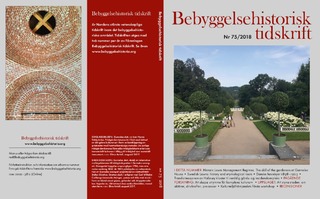Transformasjonen av Halsnøy kloster til verdslig gårds- og residenskompleks i perioden 1537–1800
Journal article, Peer reviewed
Published version
Permanent lenke
http://hdl.handle.net/11250/2589730Utgivelsesdato
2018Metadata
Vis full innførselSamlinger
Originalversjon
Bebyggelseshistorisk tidskrift. 2018, 75 76-93.Sammendrag
The background of this article on Halsnøy Abbey is an ongoing research project by the Norwegian Institute for Cultural Research (NIKU), where the authors are studying the transformation of Norwegian monastic houses into secular complexes after the Reformation.
The authors aim to shed light on the alterations that Norwegian medieval monastic houses underwent when their use changed following the Reformation. These alterations can be placed in a culture historical context, especially in relation to domestic culture and estate management in the case of large complexes. The remains at Halsnøy Abbey provide particularly good insight into past Norwegian estate culture. Previous Norwegian archaeology and building history concentrated on the Middle Ages, whereas post-Reformation remains received scant attention. This can be partly explained by the Cultural Heritage Act, which ends automatic protection in 1537.
Post-Reformation remains at monastic houses, often recorded but seldom interpreted, form a large body of source material, given that monastic houses are often well documented archaeologically. The study uses a method based on interdisciplinary analysis of archaeological and written sources. Moreover, in the case of Halsnøy Abbey a painting of the estate from 1656 proved to be a key part of the source material, and was used to coordinate the results.
The study has found evidence of change, but also continuity, at Halsnøy Abbey. Furthermore, the written sources have yielded information that explains aspects of the medieval estate. The authors hope the results will lead to a greater understanding of the heritage significance of post-Reformation remains at other, similar sites. Although site continuity reveals a depth of time, post Reformation building remains have hitherto often been removed to reveal medieval monastic features – a form of antiquated purism. These building complexes still retain great archaeological potential, and more knowledge about them will help to bring into focus the post-Reformation period in Norwegian archaeology.
